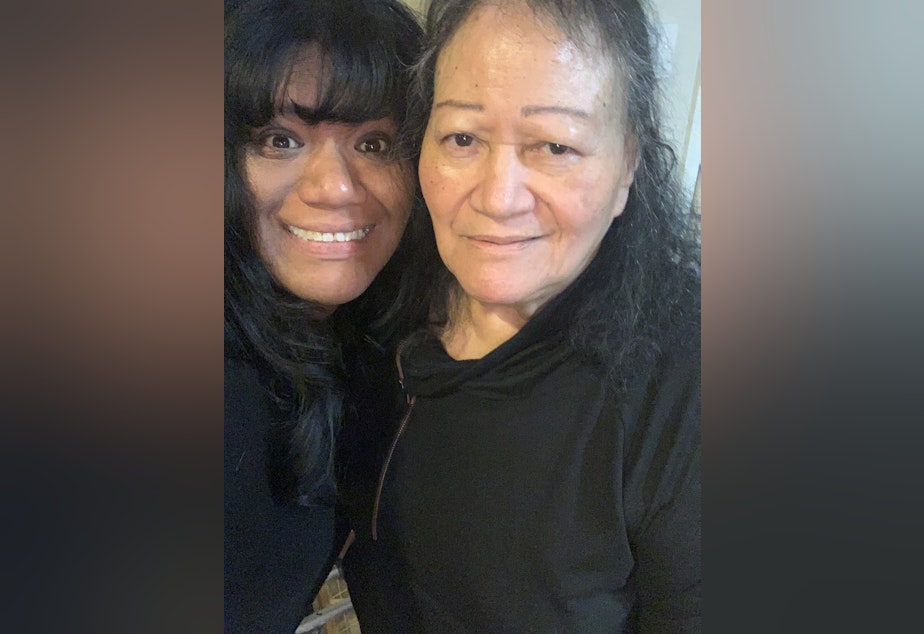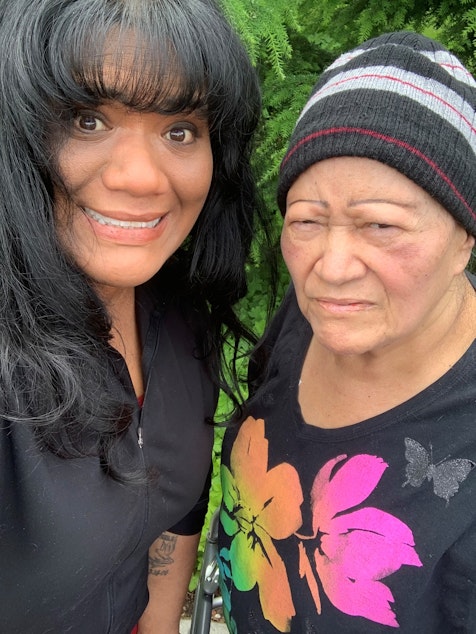A wheelchair ramp, respite care: What WA's long-term care tax could realistically get you

E
very morning, Veronica Tausili slides a sling under her mom and then uses a lift to swing her out of bed. Her mom is bedridden, due to complications from diabetes, a broken femur, and cancer — and Tausili is her full-time caregiver.
“I have to go in every morning and undress her and then kind of clean her all up,” Tausili said. “You gotta lift her up with the Hoyer lift so I can change her sheets.”
When older people in the U.S. need long-term care in a nursing home or from a home health aide, most either have to pay out of pocket or turn to family. In July, Washington became the first state to try to address the problem with a public long-term care benefit funded through a payroll tax. The state now automatically takes money from most people’s paychecks each month. Then, if they need help with basic tasks of daily living, they can apply for a lifetime benefit of up to $36,500 — a number that will grow with inflation.
It was early 2020 when Tausili quit her job as an escrow officer to take care of her mom full-time. The two of them live in Tausili’s sister’s house in Puyallup. Even though she doesn’t have to pay rent, Tausili still had to cash out her retirement to pay other bills.
Sponsored
“Here in the U.S., we’re heavily reliant on family caregivers because we don't have a public system in place,” said David Grabowski, a professor at Harvard who researches health care policy.
Sponsored
Paying for long-term care is a challenge for families nationwide, Grabowski said. That’s because Medicare doesn’t cover long-term care, and private long-term care insurance is expensive and usually has caps on benefits. Many don’t even qualify for it if they have pre-existing conditions.
That leaves people with two options: spending down all their savings and going on Medicaid, or turning to family.
“Unpaid care is not free,” Grabowski said. “It comes with a huge opportunity cost to the caregiver. We place this care largely on women and lower-income individuals. Individuals often have to take time off from work to provide this care. Obviously, they're also giving up time with their families.”
Caregiving can also take a toll on the physical and mental health of the caregiver.
In her three and a half years of caregiving, Tausili has rarely had a day off.
Sponsored
“If I’m going to go out, I’m always on a time limit, because I gotta make sure I’m back home to change Mom,” Tausili said.

Tausili’s mom won’t be able to benefit from Washington’s new long-term care program. People have to pay into it for at least three years to get anything out. And even if the program already existed, it would not cover full-time care for more than a few months.
But Tausili said she could use the money for respite care, or she could have hired an in-home caregiver after she hurt her shoulder in a car crash and couldn’t lift her mom.
About seven in 10 people will need long-term care at some point, and the scale of the problem is only growing as baby boomers age.
Sponsored
“The future’s a little scary,” said Cathy MacCaul, the advocacy director at AARP Washington and a proponent of the state’s new program, “but it’ll be in the back of my brain that at least I have that benefit.”
MacCaul said people will be able to use the money to pay for in-home care, respite care, a few months in a nursing home after a stroke, or even medical devices and home modifications.
“A lot of people just need a ramp built on their house in order to still live at home,” MacCaul said. “Or maybe it’s just meal delivery.”
Those opposed to the new program include some of the state’s Republican lawmakers, who say the private insurance market offered better options.
“This is a woefully inadequate program,” State Senator John Braun from southwest Washington said in a press conference shortly after the payroll tax went into effect. He said the new program doesn’t provide enough money to pay the full cost of long-term care, and another tax is bad for Washingtonians.
Sponsored
“It's going to be one more step that makes Washington state unaffordable for a whole group of workers,” he said.
Supporters of the tax agree it isn’t enough money to pay for years of care. They see it as a stopgap during short-term crises, or a way to help people stay in their homes for longer.
Meanwhile, other states are moving in the same direction. California is considering a tax similar to Washington’s, and several others are studying options.




